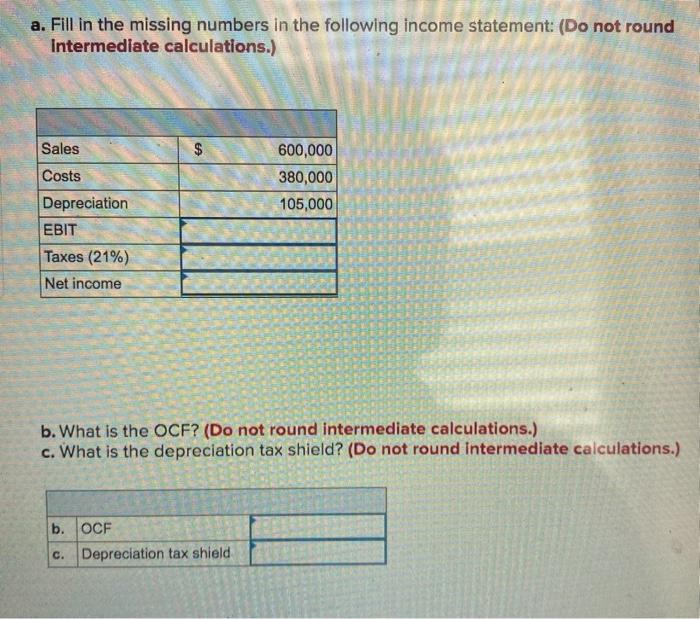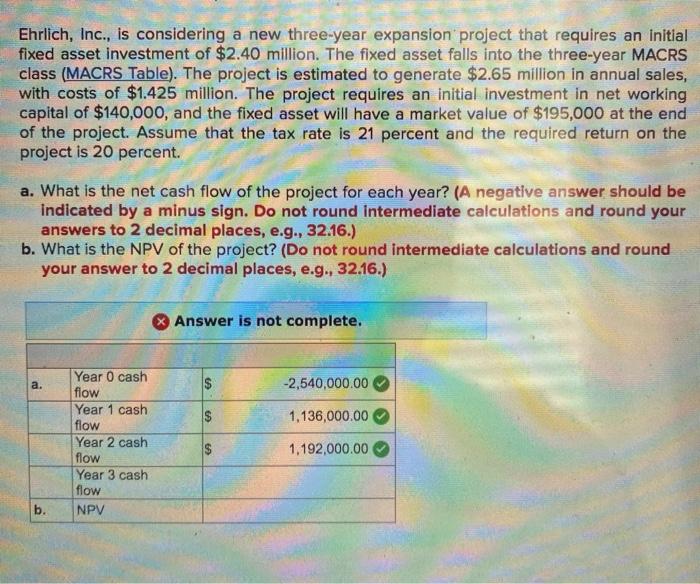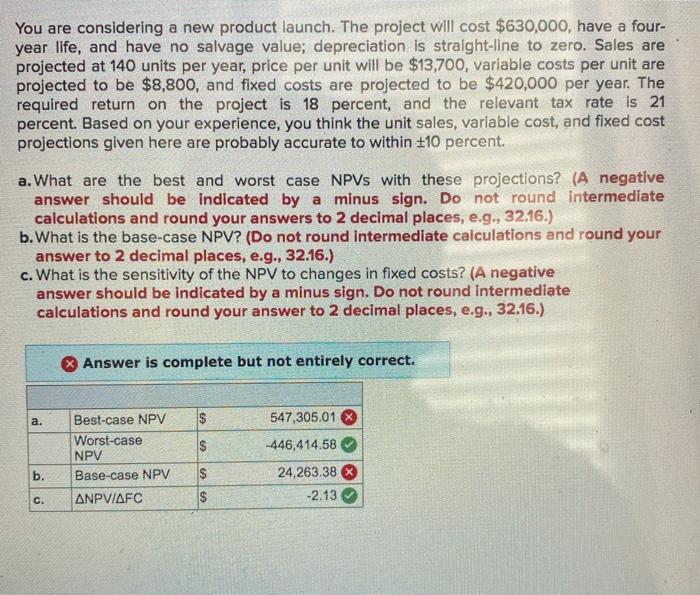a. Fill in the missing numbers in the following income statement: (Do not round Intermediate calculations.) Sales $ Costs 600,000 380,000 105,000 Depreciation EBIT Taxes (21%) Net income b. What is the OCF? (Do not round intermediate calculations.) c. What is the depreciation tax shield? (Do not round Intermediate calculations.) b. OCF c. Depreciation tax shield Ehrlich, Inc., is considering a new three-year expansion project that requires an initial fixed asset investment of $2.40 million. The fixed asset falls into the three-year MACRS class (MACRS Table). The project is estimated to generate $2.65 million in annual sales, with costs of $1.425 million. The project requires an initial investment in net working capital of $140,000, and the fixed asset will have a market value of $195,000 at the end of the project. Assume that the tax rate is 21 percent and the required return on the project is 20 percent. a. What is the net cash flow of the project for each year? (A negative answer should be indicated by a minus sign. Do not round intermediate calculations and round your answers to 2 decimal places, e.g., 16.) b. What is the NPV of the project? (Do not round intermediate calculations and round your answer to 2 decimal places, e.g., 32.16.) Answer is not complete. a. $ -2,540,000.00 $ 1,136,000.00 Year 0 cash flow Year 1 cash flow Year 2 cash flow Year 3 cash flow NPV 1.192,000.00 b. You are considering a new product launch. The project will cost $630,000, have a four- year life, and have no salvage value; depreciation is straight-line to zero. Sales are projected at 140 units per year, price per unit will be $13,700, variable costs per unit are projected to be $8,800, and fixed costs are projected to be $420,000 per year. The required return on the project is 18 percent, and the relevant tax rate is 21 percent. Based on your experience, you think the unit sales, variable cost, and fixed cost projections given here are probably accurate to within 10 percent. a. What are the best and worst case NPVs with these projections? (A negative answer should be indicated by a minus sign. Do not round Intermediate calculations and round your answers to 2 decimal places, e.g., 32.16.) b. What is the base-case NPV? (Do not round intermediate calculations and round your answer to 2 decimal places, e.g., 32.16.) c. What is the sensitivity of the NPV to changes in fixed costs? (A negative answer should be indicated by a minus sign. Do not round Intermediate calculations and round your answer to 2 decimal places, e.g., 32.16.) Answer is complete but not entirely correct. a. 547,305.01 $ $ -446,414.58 Best-case NPV Worst-case NPV Base-case NPV ANPVIAFC b. $ 24,263.38 -2.13 C. $









